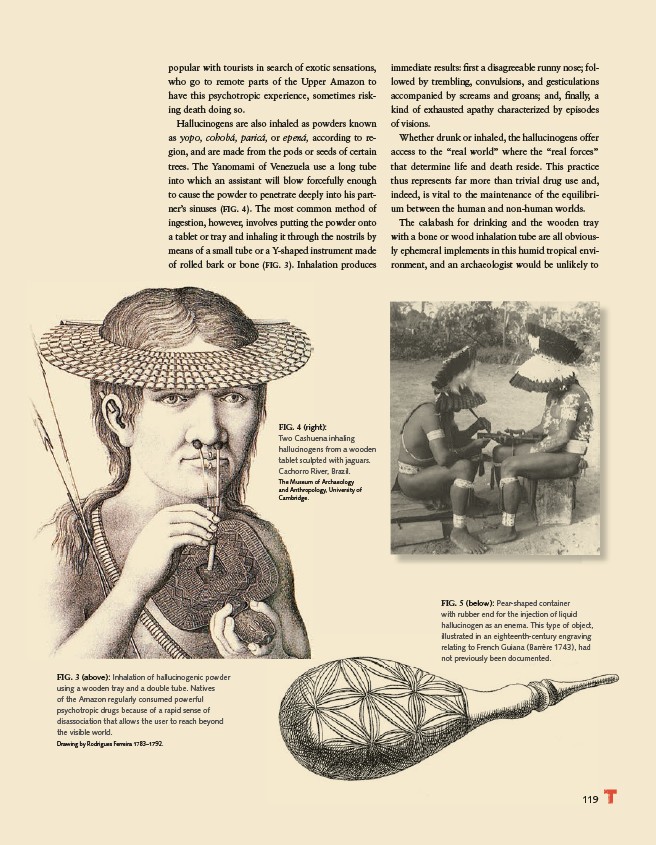
immediate results: fi rst a disagreeable runny nose; followed
by trembling, convulsions, and gesticulations
accompanied by screams and groans; and, fi nally, a
kind of exhausted apathy characterized by episodes
of visions.
Whether drunk or inhaled, the hallucinogens offer
access to the “real world” where the “real forces”
that determine life and death reside. This practice
thus represents far more than trivial drug use and,
indeed, is vital to the maintenance of the equilibrium
between the human and non-human worlds.
The calabash for drinking and the wooden tray
with a bone or wood inhalation tube are all obviously
ephemeral implements in this humid tropical environment,
and an archaeologist would be unlikely to
119
popular with tourists in search of exotic sensations,
who go to remote parts of the Upper Amazon to
have this psychotropic experience, sometimes risking
death doing so.
Hallucinogens are also inhaled as powders known
as yopo, cohobá, paricá, or epená, according to region,
and are made from the pods or seeds of certain
trees. The Yanomami of Venezuela use a long tube
into which an assistant will blow forcefully enough
to cause the powder to penetrate deeply into his partner’s
sinuses (FIG. 4). The most common method of
ingestion, however, involves putting the powder onto
a tablet or tray and inhaling it through the nostrils by
means of a small tube or a Y-shaped instrument made
of rolled bark or bone (FIG. 3). Inhalation produces
FIG. 3 (above): Inhalation of hallucinogenic powder
using a wooden tray and a double tube. Natives
of the Amazon regularly consumed powerful
psychotropic drugs because of a rapid sense of
disassociation that allows the user to reach beyond
the visible world.
Drawing by Rodrigues Ferreira 1783–1792.
FIG. 4 (right):
Two Cashuena inhaling
hallucinogens from a wooden
tablet sculpted with jaguars.
Cachorro River, Brazil.
The Museum of Archaeology
and Anthropology, University of
Cambridge.
FIG. 5 (below): Pear-shaped container
with rubber end for the injection of liquid
hallucinogen as an enema. This type of object,
illustrated in an eighteenth-century engraving
relating to French Guiana (Barrère 1743), had
not previously been documented.